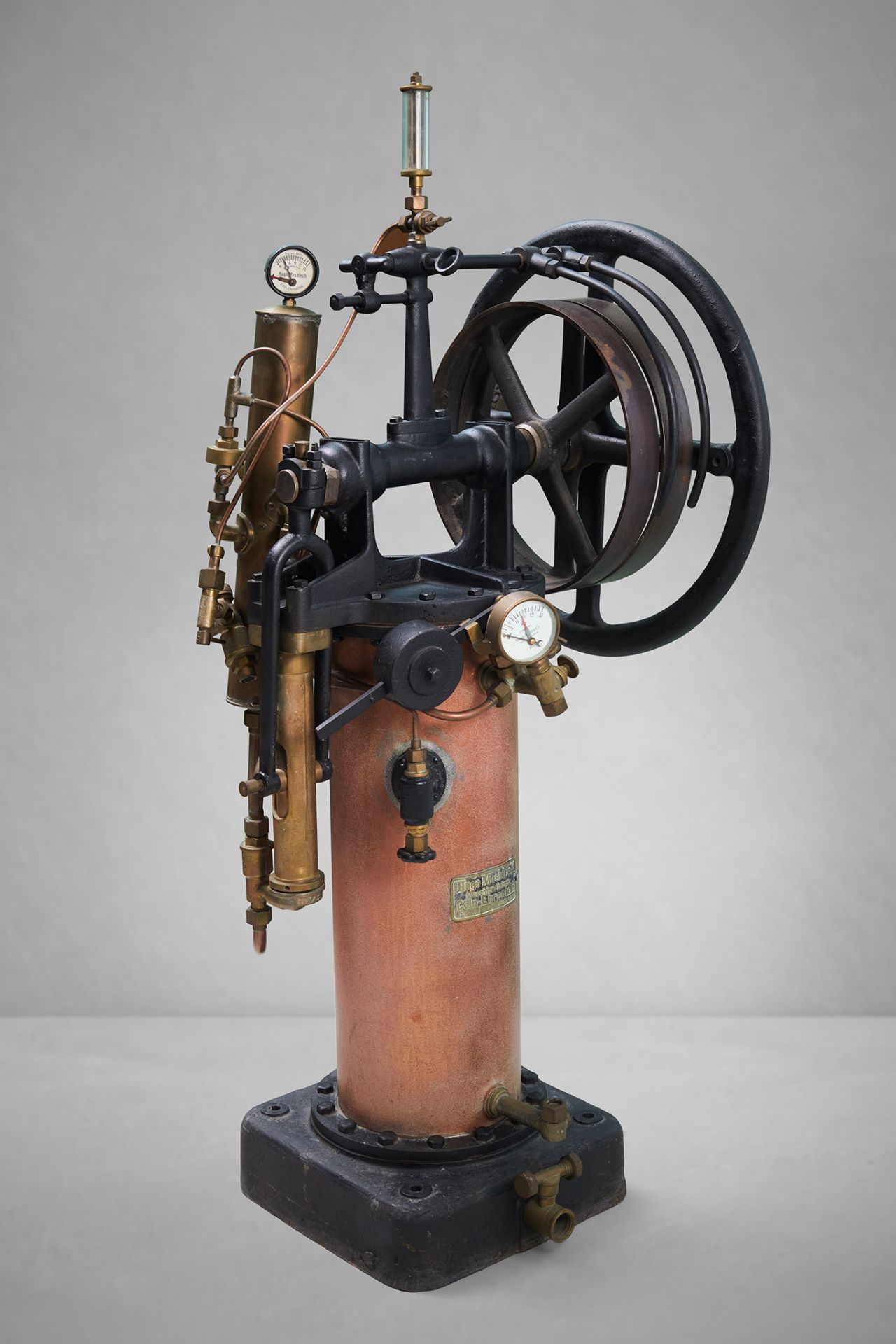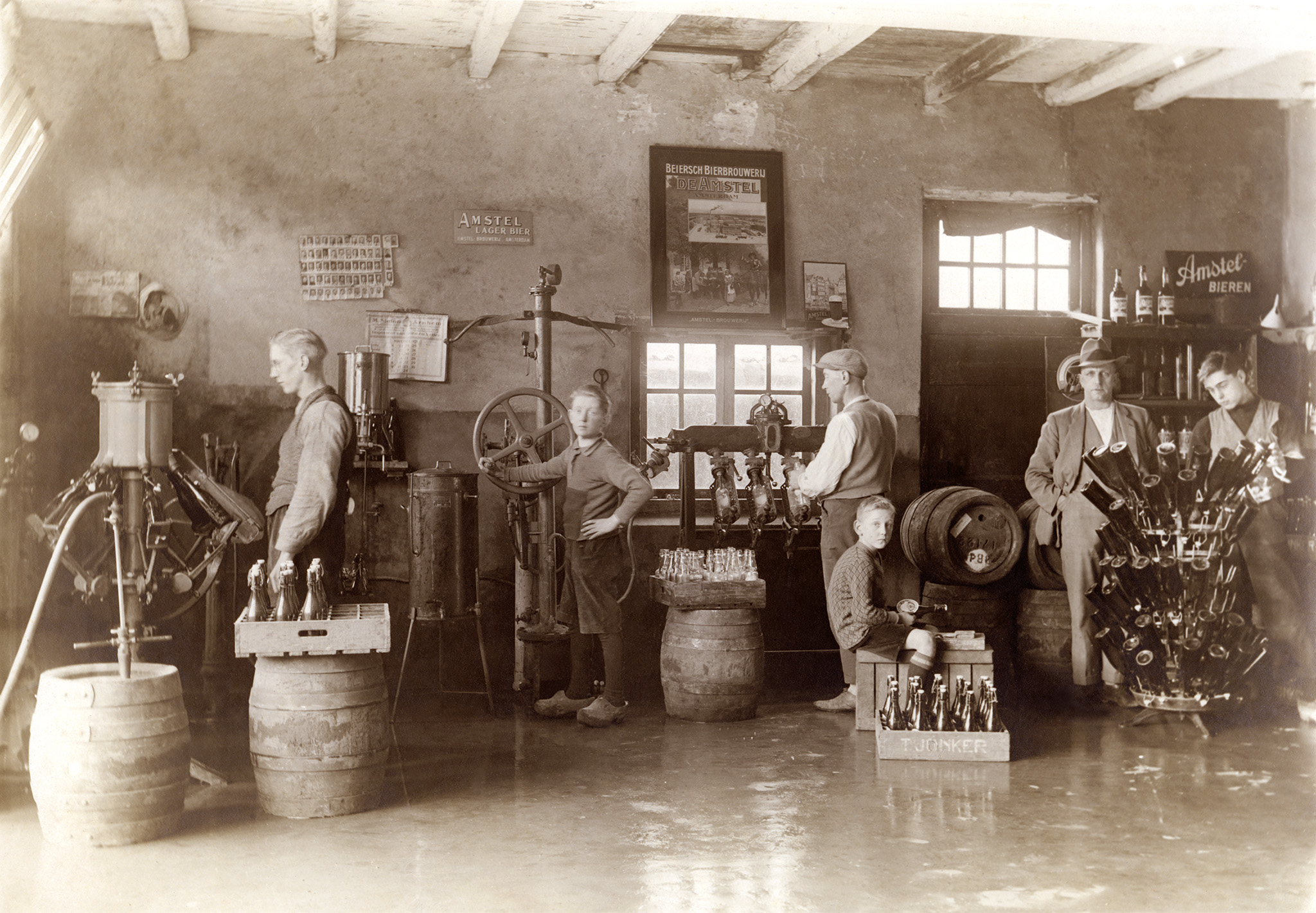INFO
Carbonation system 'Augusta'
1922
Maschinenfabrik Hugo Mosblech
metal, glass
h 149 x w 66 x d 61 cm

With fizz
Without carbonation, there is no beer – every enthusiast will attest to that. Anyone who has taken a sip from a long-forgotten open bottle knows how flat it tastes. Yet, the natural CO2 content in beer, released during the yeast's conversion of sugars into alcohol, was originally much lower than it is today.
In the 19th century, beer taps were not pressurised. Beer drinkers were accustomed to a modest carbonation tickle on the tongue. The invention of ‘soda water’ brought about a change from 1900 onwards. People became more accustomed to ‘a glass of fizz.’ This led to increasingly professional carbonation devices capable of saturating larger quantities of water with carbon dioxide.

Sturdy Augusta
In 1922, the Cologne machine factory Hugo Mosblech (since 1888) introduced the 'Augusta,' pictured here: a robust installation capable of processing 300 litres of liquid per hour, with a boiler capacity of 35 litres and 60 rotations per minute. At the top is a gauge to measure the device's pressure. Slightly lower is the presumed carbon dioxide (pressure) meter. In terms of operation, Augusta is comparable to today's SodaStream, but with supply lines: pressurised water is pumped into the device and saturated with carbon dioxide. The ‘displaced’ oxygen from the water is automatically removed. You can see whether the venting is on or off through the sight glass.
Canned beer
In the roaring twenties, the carbonation device, in addition to soda water, was mainly used for the preparation of carbonated soft drinks. This often gave rise to beverage factories, where the first soft drinks like cola were produced. Owners of such factories also frequently became agents for Heineken beer, likely explaining how the carbonation device found its way into the Heineken Collection.
The addition of extra carbonation to beer dates to a later time: it became necessary in the late 1950s due to the production of beer in cans. The Amstel Brewery, at the forefront of this development, discovered that it is challenging to control both the carbonation level and the foam strength during the can-filling process. As a solution, the can is filled through two taps: one with oxygen provides ‘counterpressure’ to the beer from the other tap, preventing it from foaming. This is followed by several carbonation injections to remove the oxygen residues from the beer. Extra carbonation is also added to compensate for the loss of carbon dioxide that may occur during the sealing process of the can.
Foam
Over time, carbon dioxide bubbles and foam received increasing attention in the brewing process. In 1989, Heineken Technical Management (HTB) even initiated a joint research project with the queen of bubbles, champagne brand Moët & Chandon, to explore the optimal foam. In less than a century, carbonation evolved from a by-product to the key quality criterion for beer.